4 key principles to consider for audience targeting on social
The social media landscape keeps changing at lightning speed. Global crises, platform popularity, new features, lockdown, mental health, Brexit bills - they all add new layers of complexity which we need to consider when we’re mapping out the social strategy.
With 45 million active users in the UK, social media usage is increasing every year. It’s playing an ever-bigger role in how products are launched and sold - and for brand-building too.
And on the flipside, audience behaviour is changing including what people expect from brands and more importantly, how they expect brands to behave online.
As social media is a key part of your brand’s digital footprint, it’s worth taking a moment to understand what you’re hoping to achieve and how it’s going to serve your target audience.
Here are a few principles (which apply to both organic and paid social) to sense-check your approach:
1. People are more than a bulleted list
Your product or service is meant to be used by, or purchased by, people. So people – real people - should be at the forefront of your strategy. A strong understanding of - and empathy with - your audience is probably one of the easiest ways you can gain an advantage over competitors.
This kind of depth can be gained whether you’re an emerging brand or an established one.
In the back of your mind there’s probably have a list of things associated with your audience persona: “our ideal customer is an ABC1 who lives in South-East England, is married, has two kids, two pets and drives a VW”.
However, being an actual person involves a bit more dimension and nuance than something reduced to a rigid bulleted list. The goal is to get closer to that “deeper meaning” which makes people engage with brands.
When we build audience personas for our clients, we give them names to make them “real”. You’ll often hear us refer to them by real names when we sense-check our work: “would this appeal to Emma?” It makes the personas a lot more relatable. It makes them people.
We also have a list of brands, influencers, services and apps which we know Emma loves associating herself with. These are revealed by our insights process.
For example, Tony's Chocolonely and Dairy Milk target different audiences. This might be different than who Snickers, or Bounty would like to think of as their ideal customer. They don’t go after anyone and everyone who love chocolate.
Here’s another example: “millennial mindset” would be one of the ways a client of ours likes to refer to their audience. That goes far beyond people who are born between 1981 and 1996.
It’s a bit of a platitude by this point, but if you don’t want the customer to treat you as a generic brand, then take the initiative. Show how you truly understand what makes them giggle inside.
2. Abide by the insights
The process of understanding your audience will reveal some insights. These insights should be reflected in every aspect of your online presence. Incorporate them in the audience targeting setup, content, as well as the community management aspects of your approach. It’s quite imperative for your brand to be successful on social.
If you’re wondering whether the insights you have are enough, here are a few questions you should be able to answer by this point*:
Is it a niche where video is usually more successful than images?
Does the audience like memes?
Is the ‘foodporn’ imagery good enough? Can we do it better?
Are the competitors satisfying the kind of demand the audience has?
Is it worth incorporating story placements or would the news feed be enough?
Is the audience demographic familiar with the features we’re asking them to use?
It is worth spending a bit more time looking at different angles to see how much you can challenge your brand category’s status quo. You’ll know the insights are good enough when they end up showing you the way. There will be an “aha!” moment.
*the list is not exhaustive
3. There’s no need to “go big or go home“
Occasionally you might encounter a situation where you feel the insights simply aren’t tight enough. There are indeed niches or topics where the search behaviour hasn’t developed yet, the competitors haven’t updated their website or social media since 1986. It’s fine to dial back a bit if this happens.
This is the stage where setting the correct expectations is key. When you’re setting up a paid social campaign, check the forecast. It’s worth taking note to see if you’re satisfied with the potential results. More doesn’t necessarily mean better. If you’re going for a B2B audience your numbers are always going to be smaller than a B2C one.
It might be worth starting out with a soft launch or a small test. Instead of rolling out with a budget of £xxxx/day to see your engagement plummet, maybe it’s worth testing a post or an ad for £xx/day to gauge the response.
There will always be room for improvement. However, if you find that your social media campaign isn’t generating any engagement or resonating with the audience, it’s time to go back to the drawing board and reassess.
4. Test, learn, and review regularly
When it comes to paid social, there is a learning process involved. The algorithm optimises your ad according to the targeting you set up to figure out the quality of your creative. This requires some time, usually 24 to 48 hours.
It’s more of an investment where you get some preliminary results to see if you’re happy to continue with the rest of the campaign.
Being successful early on increases your chances of being successful in the future. The algorithm favours a positive feedback loop. This applies to organic social as well. Similarly, bad results will increase your costs and you’ll get less for the amount of money you invest.
A bit off topic for our article, but this is why you want to make sure your organisation is in control of the social platform ad account. The data is stored in there, and any time you set up a new account the learning process starts from scratch. It’s inefficient and you’d pay to make the same mistakes twice.
Let the social posts or ads run their course so you can collect some data. If the results are close to the forecast, then it’s a good place to mark the starting point. You can find ways to optimise or test from here onwards.
In contrast, you can’t measure progress and identify ways to improve performance without this data. You need to let the content run its course as it’s the only way to learn.
Even if your social ads are performing well, it’s worth checking the results every quarter to see if the targeting needs to be adjusted. The efficiency might decrease, or your audience might learn about a new interest.
Being a successful brand on social goes beyond a checklist of “making sure we post on the right day, at a very specific hour”. Yes, it’s important to get your timing right. But if the content isn’t tailored for the audience, then you have a very small chance at being successful. Take a step back to see the broader context in which your brand operates rather than focusing on specific details which carry little impact.
Discover how our social media marketing services can boost your brand engagement.

